The Possibility of a Web Criticism
massa critica | davide tommaso ferrando
Sixteen months after having discussed it in the frame of the critic|all conference (ETSA Madrid, June 2014), I have eventually decided to publish an edited version of my paper on Architecture Criticism in the Age of Social Networks, with which I officially started my investigation on the (difficult) relation between today’s digital media and critical discourse. As my first essay on the matter, it brings to the fore several issues, some of which I have since then developed through further articles and lectures, although much has still to be done. In order to make it more easily readable, I have divided the text into three posts (one per chapter – read the second and third), and updated some of its references and images. I also hope that this and the next two posts will help me gather new thoughts on the topic, so anyone who has something to say on it is very much welcome to comment or write me. DTF
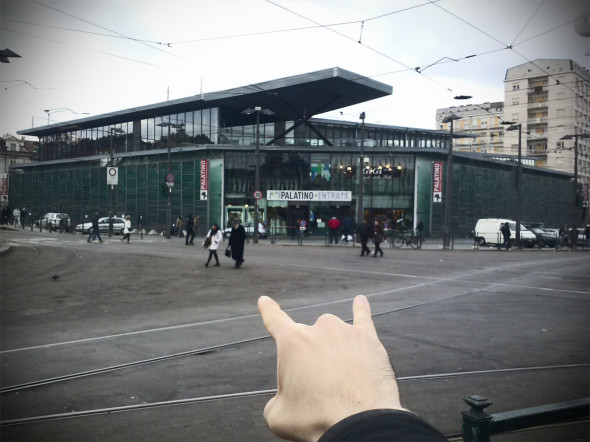 Objets à réaction prosaïque: Palatino Center, Turin
Objets à réaction prosaïque: Palatino Center, Turin
Interrogatives on the state of health, purposes and functioning of criticism are strongly rooted in the history of architecture (suffice to say that in the 1930s, editor of “The Architectural Review” JM Richards already bemoaned the lack of architectural criticism in his country): after all, the disruption/subversion of everything, including its own foundations, is a fundamental part of criticism’s DNA. Cyclically, we wonder what criticism can do to solve architecture’s problems, what characterizes the relationship between critics and architects, how criticism relates to its current media, if criticism is still “alive”, etc1.
Indeed, such issues have become newly relevant as a reaction to a long period of critical numbness that coincided with the ebullient years of the real estate bubble, when whoever dared to criticize the choices of the architects who were involved in the all-you-can-eat buffet was automatically refused access to it. In an interview recently published on “PLOT”, Iñaki Abalos has genuinely explained the mechanisms that used to steer critical practice in the years of the boom: «When I was writing for “El Pais”, they used to ask me for critical pieces, but I answered them that “I have no intention to mess with Zaha Hadid or anyone else”, I can’t and I shouldn’t, because it’s ridiculous. […] Anyone with a common sense who’s practising architecture knows that you can’t criticize your colleagues, otherwise they’ll do the same to you»2. A foxy logic that in the same years was also applied by many tout-court writers, who evidently found it convenient to suspend critical judgement every time best-seller names were involved in their editorial tasks.
At the same time, and possibly for the very same reasons, magazines gradually lost interest in enrolling writers known to be too judgemental, preferring to shrink the critic’s role to commenting only on the appearance of architecture, as Alexandra Lange has written3 in reference to the former architecture critic of “The New York Times”, Nicolai Ouroussoff. What’s more, according to Nancy Levinson4, early XXI century’s processes of cultural globalization have played an important role in the progressive weakening of architecture criticism, which in 2011 appeared to be, to put it with Thomas Fisher’s words, «in danger of disappearing at the very moment when we need, more than ever, a searching and sustained critical conversation about the built world»5.
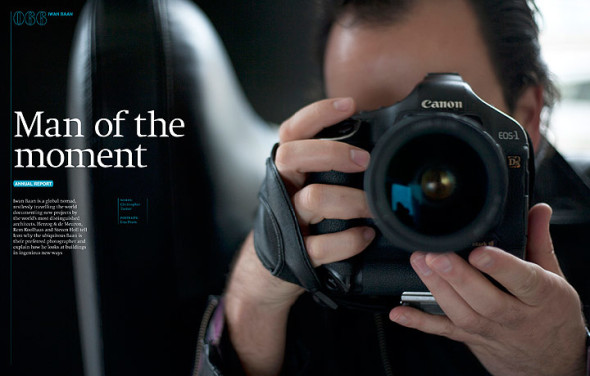 ICON Magazine Dec 2011: Cover interview with Iwan Baan
ICON Magazine Dec 2011: Cover interview with Iwan Baan
Architecture criticism cannot exist without the support of dissemination channels: as soon as (both paper and digital) magazines discovered that they are better of without them, critics got secluded in a niche market from which little and sporadic income could actually be gained, therefore being forced to recycle themselves by taking on editorial activities that are less disturbing to architects. Meanwhile, a new figure has emerged out of the ashes of the architecture critic: that of the globetrotter photographer (one of the few professionals who still get paid to travel and actually see buildings in first person), who’s now charged with the responsibility of taking care of what clearly seems to be the most important aspect of contemporary architecture: its image6. As soon as the production of project descriptions was taken away from critics and given indifferently to journalists, photographers or even the same designers, the written text lost its traditional relevance as a tool for the communication of architecture, being rapidly replaced by the more spectacular and easily consumable photographic reportage. Today, and as a consequence, mainstream media tend to do little more than reporting or rearranging in narrative form what architecture offices think of their own work, with an inevitable leak of critical insight that clearly doesn’t help understanding the real values – and especially the mistakes – of published architectures.
With these premises, it would seem just too easy to speak of the present condition in terms of a critical cul-de-sac. During the last few years, nevertheless, something has started to change. The burst of the real estate bubble has in fact plunged architects and writers in a suddenly paralysed market, where the space for construction has shrank while, by the same token, the time for disciplinary research and self-criticism has suddenly expanded. At the same time, the propagation on the web of free communication tools, such as blogs and social networks, has provided both writers and architects with a range of easily accessible and hugely accessed media to experiment with: tools that, as insightfully explained by Alexandra Lange on Dezeen, are wasted if reduced to mere ramifications of a traditional press office, while, if used properly, can become powerful agents of knowledge, since they have the potential to «make criticism, interpretation, dialogue and history part of daily life»7.
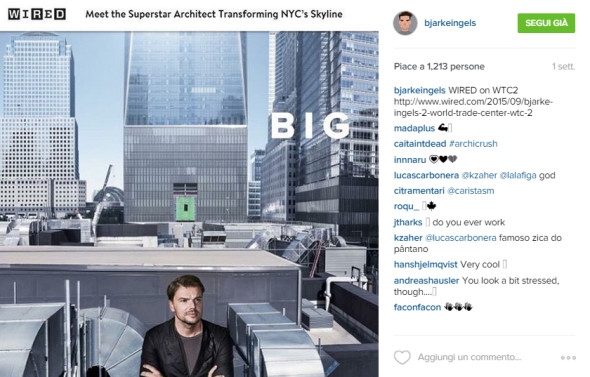 Screenshot of a recent post published on Bjarke Ingel’s Instagram profile
Screenshot of a recent post published on Bjarke Ingel’s Instagram profile
There are three crucial points here, which deserve to be made more explicit in order to fully understand the implications of this new communicative paradigm. First: that after having been widely excluded from mainstream media, architecture criticism is finding an alternative place where to develop itself in independent magazines and web platforms. Second: that thanks to the support of widely used social media (such as Facebook, Tumblr or Twitter), critical contents can now reach an extremely wide public once they are published on the web. Third: that this kind of editorial system doesn’t guarantee (with some exceptions) a significant monetary income, or at least not directly.
In his new book, Stefano Mirti has efficaciously described the way in which the editorial market has recently changed: «Fifteen years ago I used to write some articles for […] specialized magazines. Articles that were elaborated and complex, demanded a lot of time, and were adequately payed. With the passing of time, the amount of money per article has shrunk progressively, while the complexity of the work has remained the same. At a certain point, with the advent of the web […], I was able to make a choice. The options were clear: do I prefer to earn a symbolic amount of money (for a significant and complex work) or do I prefer to work on the web in a completely free and simplified way without earning anything? The second option won»8.
According to Mirti, there’s a lot to be gained by switching to the new editorial model: the loss of direct income, in fact, is counterbalanced by the multiplication of the author’s visibility and communication range, which eventually can lead to monetary benefits thanks to the generation of new professional occasions. Like in low cost airlines, the core-business of criticism is shifting from the main activity (flying/writing) to the accessory ones (checking in/networking), with the not-so-secondary surplus value that writing for oneself guarantees total freedom in terms of time management and content definition. Of course, Mirti’s is a hard and long way to go, but one that deserves to be taken in consideration.
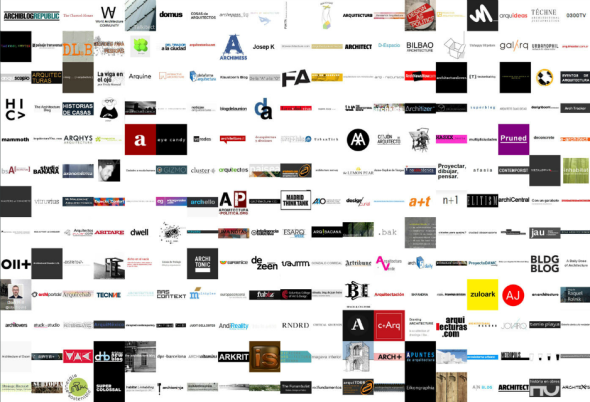 Archiblog Republic: an ETSA Madrid investigation on architecture blogs
Archiblog Republic: an ETSA Madrid investigation on architecture blogs
It is so that, in parallel with the contribution of “classic” media such as books and magazines, contemporary architectural discourse is being renovated by a multifaceted and global network of independent editorial projects that use the web, in all its forms, as their principal medium, and that recur to criticism, in all its declinations9, as a privileged way to approach the matters of architecture. Many of these editorial projects10 have little to share with the “blog” format (which is fundamentally based on a personal daily narrative), as they possess an editorial organization whose complexity is more common to that of traditional magazines, although made lighter and more flexible in terms of economics (no printing or distribution is needed), deadlines (there’s no need to respect a rigid schedule on the web) and content definition (as economic interest is usually absent from these websites, and as their editors are usually free from networks of power, little or no pressure comes from sponsors or influential friends).
About contents, it is important to note that the most convincing of these editorial projects – and especially all those that depend from academic or extra-academic research projects, such as Failed Architecture or Petropolis of Tomorrow – tend to develop their contents around a very specific topic (failure, “petropolises”, urbanization processes in India, etc.), and therefore concentrate a “critical mass” of related writings in one same (virtual) place. As a consequence, a fundamental change in the geography of architectural discourse has taken place in the near past: if, only ten years ago, architectural knowledge was leaded by a limited number of printed and unevenly distributed magazines, each one covering a more or less wide range of topics in the field of architecture, today we are faced with a dense and growing network of online editorial project that can offer, on a worldwide scale and usually for free, deeply specialized contents.
Although I don’t think of this process in terms of substitution – the “rise of the webzine” is hardly going to determine the death of the printed magazine, but rather its evolution – it is evident that the web has already become the principal medium for architectural communication, at least in terms of number of readers (which is not a secondary term). In this sense, it seems definitively anachronistic to postulate, as some critics still do, the impossibility of existence of a web criticism: just as past societies have been able to develop all their linguistic functions through their available media, we ourselves must be capable of developing a critical discourse on architecture by recurring to web tools.
Notes:
1. Just to mention four exemplary cases, all related to important paper magazines: in 2010, “OASE” has published its issue #81 titled Constructing Criticism, in which the current state of architecture criticism is simultaneously evaluated and explored through a number of very interesting essays; in 2011, “Domus” has organized Critical Futures: a three-parts debate (1, 2 and 3) on the future of architecture criticism, moderated by Joseph Grima and broadcast live from London, Milan and New York; in 2013, “Volume” has published its issue #36 titled Ways to be critical, in which the recurrent theme of the death of criticism is interpreted in the context of critique’s dilution in the networks’ babble of opinions; in the same year, Madrid’sNational Library of Spain has organized the round table Palabra de Arquitecto: el ámbito digital, ¿un nuevo espacio para la crítica arquitectónica? curated by Domenico Di Siena, in which the possibility to develop true critical discourse on the web was seriously questioned by some of its participants (which is the reason for I started writing this text in the first place).
2. RODRÍGUEZ, Florencia. Más Arquitectura. In “PLOT”, 17 February 2014.
3. LANGE, Alexandra. Why Nicolai Ouroussoff Is Not Good Enough. In “Places”, 18 February 2010.
4. LEVINSON, Nancy. Critical Beat. In “Places”, 6 March 2010.
5. FISHER, Thomas. The Death and Life of Great Architecture Criticism. In “Places”, 1 December 2011.
6. I remember, when I still was an editor of Europaconcorsi, feeling like my work was in the hands of renewed photographers such as Roland Halbe who, thanks to copyright agreements, usually had the final word on what was going to be published and what was not.
7. LANGE, Alexandra. It’s easy to make fun of Bjarke Ingels on Instagram. In “Dezeen”, 7 January 2014.
8. MIRTI, Stefano. Il Mondo Nuovo: Guida Tascabile. #design #socialmedia #alterazioni. Postmedia Books, Piacenza, 2013, p. 81.
9. According to Hélène Jannière, the term “architecture criticism” is surrounded by a semantic vagueness that makes it usable to indicate, alternatively, a profession, a set of social practices, a scholarly discourse on architecture or an internal decision-making process in the architectural design (see JANNIÈRE, Hélène. Architecture Criticism: Identifying an Object of Study. In “OASE” n.81, June 2010, p. 40). In this essay, I make reference to all these acceptations simultaneously, although I am especially interested in criticism as judgment of architectural ideas and built works.
10. Knowing that all lists are inevitably incomplete (something which to me is an advantage, more than a problem), I would like to put in evidence five independent editorial projects that I regularly follow and that recur, although in different ways, to architecture criticism in an efficient and sometimes experimental way. 1) UnCube (Berlin): an innovative digital magazine published by BauNetz Media and edited by Sophie Lovell, Robert Wilson, Florian Heilmeyer, Fiona Shipwright and Elvia Wilk; 2) The Avery Review (New York): a digital journal of critical essays on architecture, edited by James Graham and promoted by the Office of Publications at the Columbia University Graduate School of Architecture ; 3) Socks (Paris): Mariabruna Fabrizi and Fosco Lucarelli’s curated archive of references; 4) Failed Architecture (Amsterdam): research platform dedicated to urban failure edited by Michiel van Iersel, Mark Minkjan, René Boer, Tim Verlaan and Rafe Copeland; 5) Gizmo (Milan): editorial platform of a research collective founded in 2004 by Marco Biraghi, Gabriella Lo Ricco, Silvia Micheli and Mario Viganò; 6) Of Houses (Suceava): Daniel Tudor Munteanu’s collaborative collection of Old Forgotten Houses.
Related Posts
Questo sito usa Akismet per ridurre lo spam. Scopri come i tuoi dati vengono elaborati.



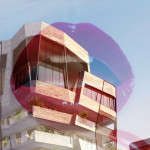




Lascia un commento